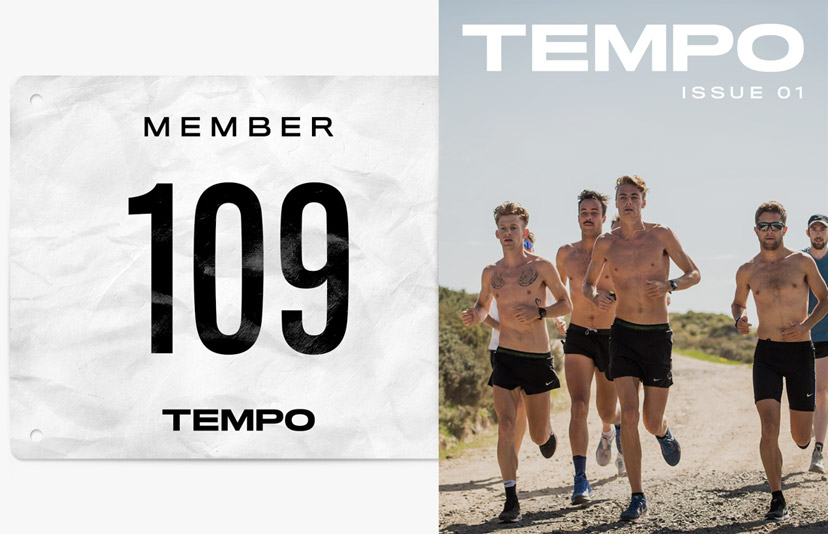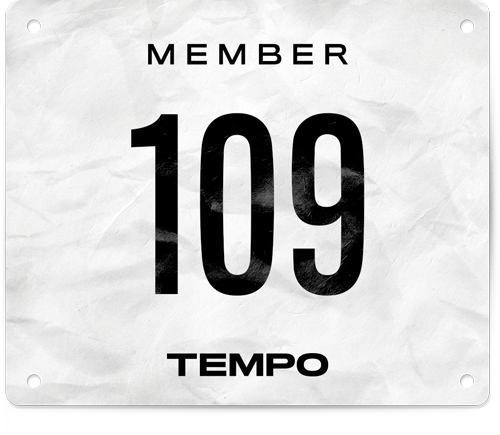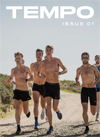Culture
City Guide: Tracktown, USA
The home of American track and field is probably not what you expected
HOUR 0 - THE I-5 FREEWAY, SOMEWHERE BETWEEN PORTLAND AND EUGENE
Eugene by way of Portland, I think, is the most common way to get there. Eugene is too small to have its own large, commercial airport, so your best bet is to fly into Portland and snag yourself a rental car. I’m sitting in the backseat of a Toyota Corolla when I ask Stephen what he thought of Eugene the first time he went there.
“I had never seen so many degenerates in one place in all my life,” said Stephen from the driver’s seat. We were accompanied by Scott Olberding. Both he and Stephen had been collegiate runners just up the road at the University of Portland. “I knew right then and there it was not the place for me.”
We are headed down to Eugene for the 2018 Pre Classic, the last remaining Diamond League meet in the United States. This would be the final rendition at Historic Hayward Field before they dust the place to make way for a brand new stadium ahead of the 2021 World Championships.
Stephen continues to ramble as I try to take a nap.
HOUR 3 - AMAZON TRAIL, SOUTH EUGENE
I’m standing on a wood chip trail waiting for Stephen to come ripping down the home stretch of the one kilometer loop that makes up half of Eugene’s revered Amazon Trail. We arrived in Eugene a few hours earlier, having spent the better part of the afternoon at the meet hotel picking up our credentials and attending the press conference.
The meet that day starts at 6:30 pm. But first, Stephen had to sneak in 10-miles and some strides on the wood chip trail network that snakes through South Eugene.
As I wait for him, I notice the fingerprints of Eugene’s moniker--Tracktown USA--all over the trail. On the awning covering a bench is a Lost Boys Track Club sticker. There’s a bulletin board at the trailhead dedicated to “RUNNING NEWS.” They even have 1000m markers, something you’d be hard pressed to find in any other American greenbelt. But then I spot a plaque donated by the Oregon Track Club thanking Adidas for making the trail possible. I suppose when the OTC is going to bat as a civic institution for your city, they’re not going to leave out the small things that track nerds love about Eugene.
Stephen finishes up his last stride. Hands on his knees, I tell him to hurry up, the meet starts in less than an hour.
HOUR 5 - Underneath the West Grandstand, Hayward Field
Down in the guts of Hayward Field there’s a 7-lane, 75-meter track. When there isn’t a world class track meet happening, it looks like this place is used as a storage shed. Old alter-g treadmills. Starting blocks. Hundreds of hurdles. Medicine balls, vaulting poles, folding chairs. Right now, though, it’s all pushed to the side so that in an hour or two, when things really start kicking, athletes from across North and South America, Africa, Australia and Europe can pal around while waiting for their race to start. I imagine during a sold out meet--which is probably every one they hold at Hayward--you warm up down there and try not to have a panic attack while listening to the muffled claps and stomps from the roaring crowd above.
In the corner of the warm up area I find Mike Grover. Mike is a retired police chief of a small Oregon town called Cottage Grove, but he’s spent the last 30-years or so raking the long jump pits. Or as he likes to say, he’s the “head of the horizontal jumps.” Between molding plasticine onto the boards for the sand pits and answering questions about where certain boxes of equipment are, I ask him if he’s going to miss the old Hayward Field.
“Oh, hell no,” he said. He bemoaned the lack of upkeep and expressed a few safety concerns, aimed particularly at the older, iconic East Grandstand. Surely, though, he has some good memories of the place over his 30 years?
“Probably watching Ashton Eaton set the World Record in 2012,” he said. “I was on the board. It was pouring rain and people said ‘it’s raining too hard.’ And I say ‘maybe for you,’ but it sure wasn’t for him.”
As far as track and field goes, there’s no other place in the states--maybe even the world--that’s seen the type of performances that Hayward has. A look down the stadium record book alone is enough to end any sort of pissing contest. Craig Mottram’s 8:03 2-mile. A 12:56 5,000m from Sir Mo Farah. A 26:25 10,000m from Bekele. But I guess a world record is a pretty good trump card, so I smile and nod to Mike, then make my way to the track.
HOUR 8 - FINISH LINE, HAYWARD FIELD
It’s a short bill of events today. Just four races and the meet is over. We’re gathered around the finish line, waiting to see if the men’s 2-mile will go with the prescribed pace. There were murmurs of an American Record attempt, which would be 8:07.07. But when the rabbit comes through the mile 5-seconds clear of the pack, me and the rest of Hayward Field mentally pack it in.
A young Selemon Barega crosses the finish line in 8:20.01 and the meet is over. There would be no Hayward Magic tonight. Before I got to Eugene, I asked a buddy about running at Hayward Field and the energy they say goes along with it.
“I think everybody just gets so amped about running at Hayward that a good race feels amazing,” said Carl Stones. Carl was an an NCAA All-American for Tulsa back in 2012, and ran professionally up until last season. “But a bad race just feels like an even steeper fall. I've run four races there and I can only say that one of them wasn't bad, and when you're in Tracktown USA it's a lot harder to get away from a bad race.”
I run that sentiment by Stephen, who’s standing next to me squinting at his camera’s LCD screen.
“Yeah, it definitely carries some weight in terms of atmosphere. No question there,” he said. “But sometimes it’s more fun to show up to a dinky ass track with your best friends and run without any sort of consequence. Hayward always carried consequence”
HOUR 18 - PRE’S TRAIL, SOMEWHERE ALONG THE WILLAMETTE RIVER
I park the rental car illegally in what looks like a faculty only parking lot. That morning, Scott said he was going to run for 90-minutes out along Pre’s Trail before the second day of the meet started. I had no intention of running that far so decided to let him loose and try to find him somewhere out on the short, 4-mile wood chip trail.
To my knowledge, there’s one entrance to Pre’s Trail and it’s under a large set of railroad tracks that eventually lead to a pedestrian bridge over the Willamette River. As I work up the courage to start moving my body, droves of split short clad runners spill out of the trailhead. Surely, I think, this has to be part of some organized run. There can’t be that many runners in this city? I quickly forget my goal of finding Scott and wait near the bridge, counting runners as they go by.
The sheer number of them is almost comical. And I’m not talking about fitness joggers. I’m talking about runners. Runners who have pooped outside. Runners who have nearly had an aneurysm waiting to acquire GPS signal. Runners who wouldn’t dare slap a 13.1 sticker on the bumper of their car. But all of this, out here in the woods, is in direct contrast with the city of Eugene itself. Which, from my observations, is small, sleepy, and suburban.
“The whole city revolves around the track when there’s a championship meet there,” says Nicole Bush. Nicole was the 2013 US Champ in the Steeplechase and has spent a fair amount of time racing and hanging out in Eugene. “But it feels weird, because it’s all these high level track and field athletes wandering around a town with a lot of pot heads and other hippies who probably give no fucks about all the track going on.”
This makes more sense to me after we finish our run and head to breakfast. Along the way, a shirtless man playing soccer walks up to me and says “what’s going on here?” as he uses his free hand to wave in the general direction of the track. We all say “a track meet.” He responds with a disappointed “oh,” before running away.
“It’s all these high level track and field athletes wandering around a town with a lot of pot heads and other hippies who probably give no fucks about all the track going on.”
Nicole Bush
HOUR 22 - HAYWARD FIELD
Hayward Magic has finally flexed its muscles. We watched five men dip under the 10-second mark for 100m; four women break 4 for the 1500m; a sub 3:50 mile by Timothy Cheruiyot and a 3:52 mile by some Norwegian kid born in the year 2000.
After the men’s international mile, they pause the action and announce that with Riley Masters’ 6th place, 3:58.12 finish, he has become the 500th athlete to break 4 for the mile inside Historic Hayward Field. Alan Webb walks out from the grandstands and presents a small plaque to Riley. The significance of Alan is not lost on the crowd and they go berserk.
My phone buzzes. Sitting on his couch just 100 miles north back in Portland, Mitch Kastoff, a former track and field journalist for Flotrack, is texting me some thoughts on the day’s activities.
“If you don’t believe in Hayward Magic, you’re a fool,” he says, seemingly in reference to the 17-year old kid who just ran 3:52.
I fire back, “Yeah, but have you ever actually seen it?”
He then launches into a story about the 2014 NCAA Outdoor Championships and the duel between then Duck, Mac Fleet, and Arizona Wildcat, Lawi Lalang.
“With 75-meters to go, the two were stride for stride,” he said. “I was fairly confident Lalang was going to win, probably by the narrowest of margins. But the Hayward crowd, Ducks fans en masse, rose to their feet as their prodigal son hit the homestretch. Instead of faltering, like the Hand of God, the crowd pushed Fleet just a few inches closer to the finish line than Lalang, and he nipped the Wildcat by 0.04 seconds. It was wondrous and awe-inspiring. I immediately became a believer in the so-called magic after that.”
HOUR 26 - DOWNTOWN EUGENE
As we’re packing up our gear I ask Stephen if he wants to drive through downtown Eugene and show me the sights and sounds. He gently reminds me of the degenerates I’ve been hearing so much about but agrees to do it.
As far as cities go, Eugene is small. It’s more or less a college town, with a population of 166,575 as of 2016. That makes it the 158th largest city in America, but the 2nd largest city in Oregon. By my roughest of calculations, during the weekend the sub-4 miler per capita hovers right around 40 per 100,000. And that’s just the people racing for the weekend. I bet I could round up another 45 or so just walking around Pre’s Trail and nearly double that statistic to crisis levels.
I’m thinking about this as we descend into Downtown Eugene.
Stephen deftly navigates the streets and we park the car on what I think is the main drag. Outside my window two teens skateboard by a recreational marijuana shop (weed’s been legal in Oregon since 2015). An adult on a BMX bike skids by. I see a man peel off into an alley, ostensibly to break a public urination law. Down near the county courthouse there’s some sort of street fair going on and I make my way towards the commotion to see what all the fuss is about.
The sound of drumming fills the air as I walk among street purveyors busy hawking homemade candles and prayer flags, among other useless knick knacks and chotchkies. Following the sound of the drums I emerge into an open plaza where there is, you guessed it, a drum circle. In the middle are dogs, children, and women dancing like they’re possessed. In the immediate vicinity, there are at least 20 different tables selling bongs and bongs only. Discreetly, I pick up my camera and start snapping some pictures, but I get the feeling that I’m being fingered as some sort of narc.
“Do you come down here a lot?” says a stranger.
I turn around. “Oh, no. I’m just here for the track meet,” I say. Being in Tracktown USA, I figured this would be a natural jumping off point for her to tell me a story about the time she went on a date with Steve Prefontaine or sold waffle irons to Bill Bowerman.
“Hmph. You mean you can do that outside of elementary school?” she responded. I gently say yes, take a picture of her dog, and say goodbye.
I’ve had my fill. Time to go home.
HOUR 29 - EUGENE CITY LIMITS
Stephen is thinking over the weekend.
“I don’t know. It’s just a bizarre place,” he says. “You’d think the epicenter of American running would be something different, but it’s not. And maybe that’s cool. Maybe it’s why track is still a bit misunderstood.”
The entire weekend has been an exercise in contrast. World class track and field inside the bubble of Hayward Field and decent, soft surface running on well groomed--if not slightly monotonous--trails. Outside the walls of the hollowed stadium, though, is a regular cast of potheads and burnouts, singing kumbaya in the middle of what should otherwise be a blue collar, hippie-bashing logging town.
Driving towards Portland, I think back to something Mitch said to me earlier in the day.
“Eugene is about as Oregon as Oregon gets. It feels like it’s stuck in the past,” he said. “It’s like Eugene realized that at some exact moment, it was peak “good time,” and then never moved toward the future. I like that.”
In Mitch’s version of Eugene, I find clarity in what I’ve seen this weekend. Back in the 1970s Steve Prefontaine was an American icon, the running boom was in full swing, and the lingering effects of the 60s counterculture movement, drug use and all, were evident, if even just in Pre’s damn near chin length sideburns.
Yes, I think, this seems like as good a place as any to pause time.


